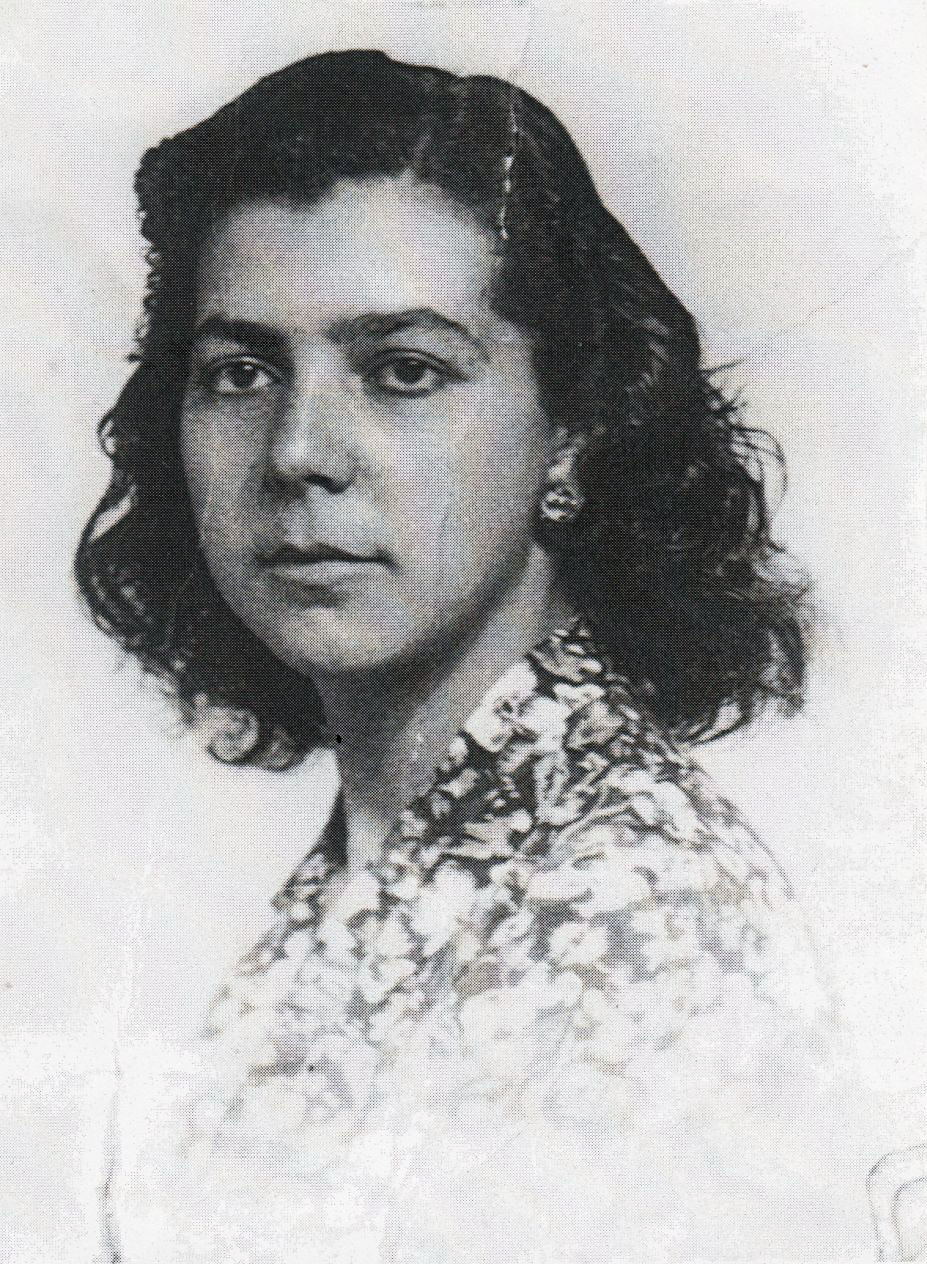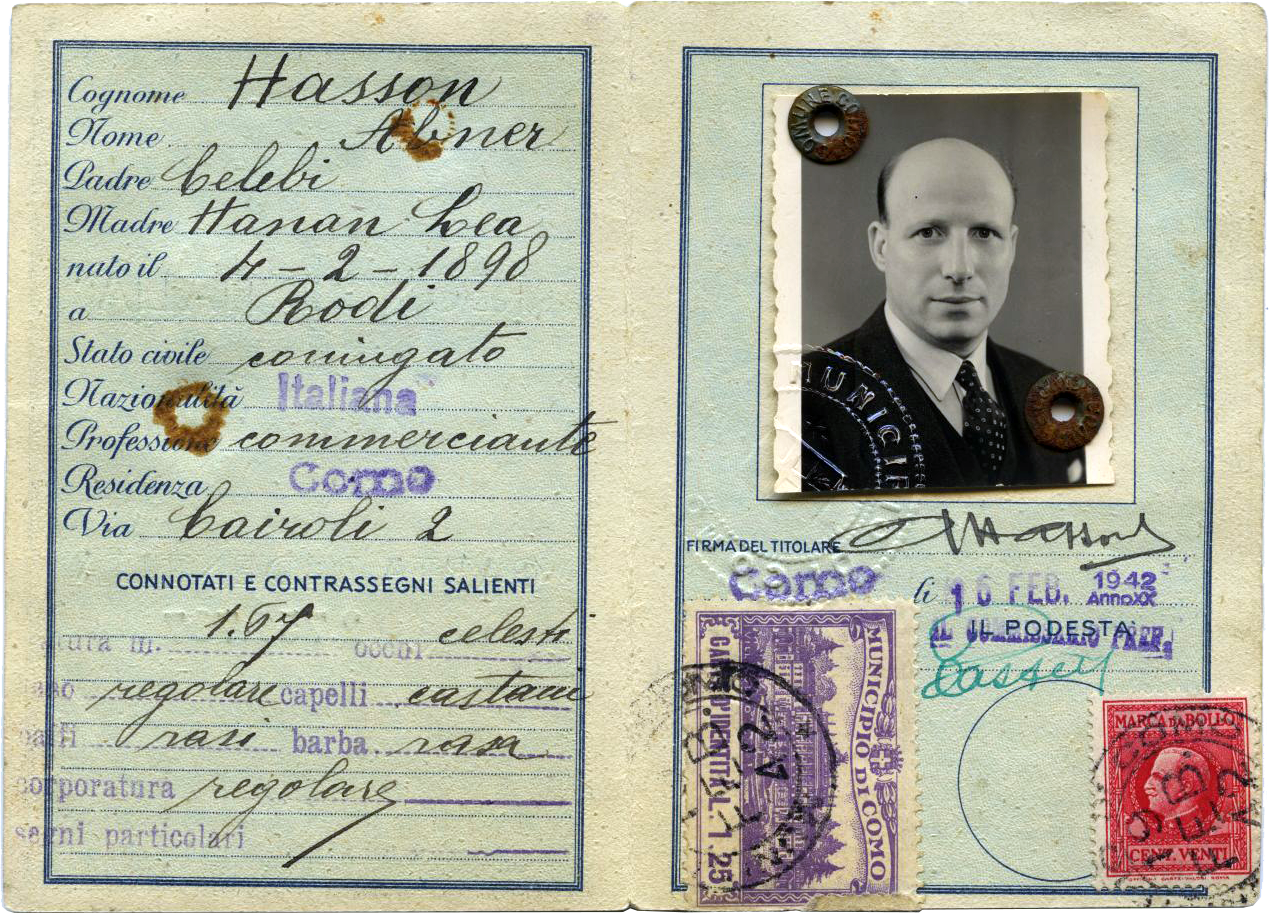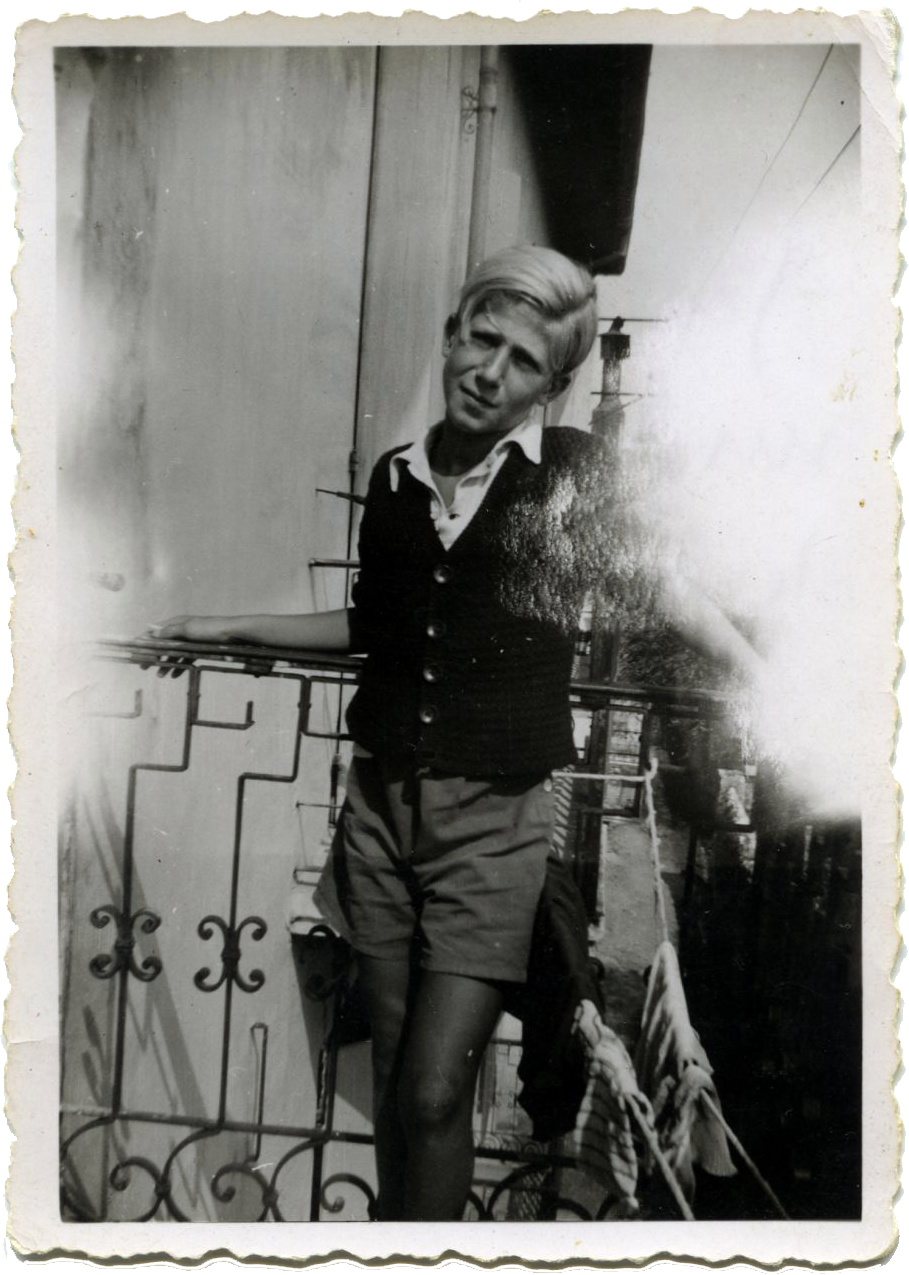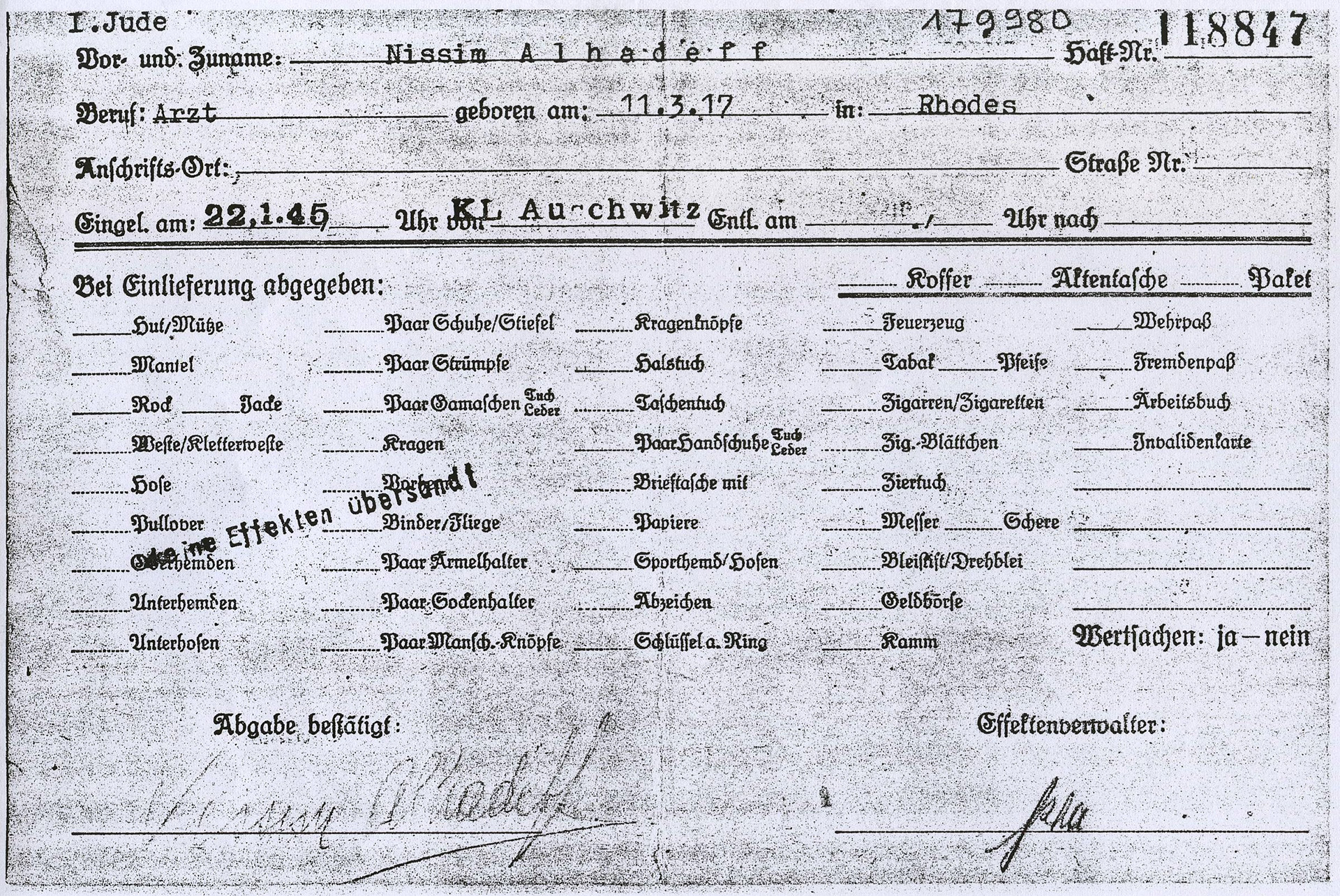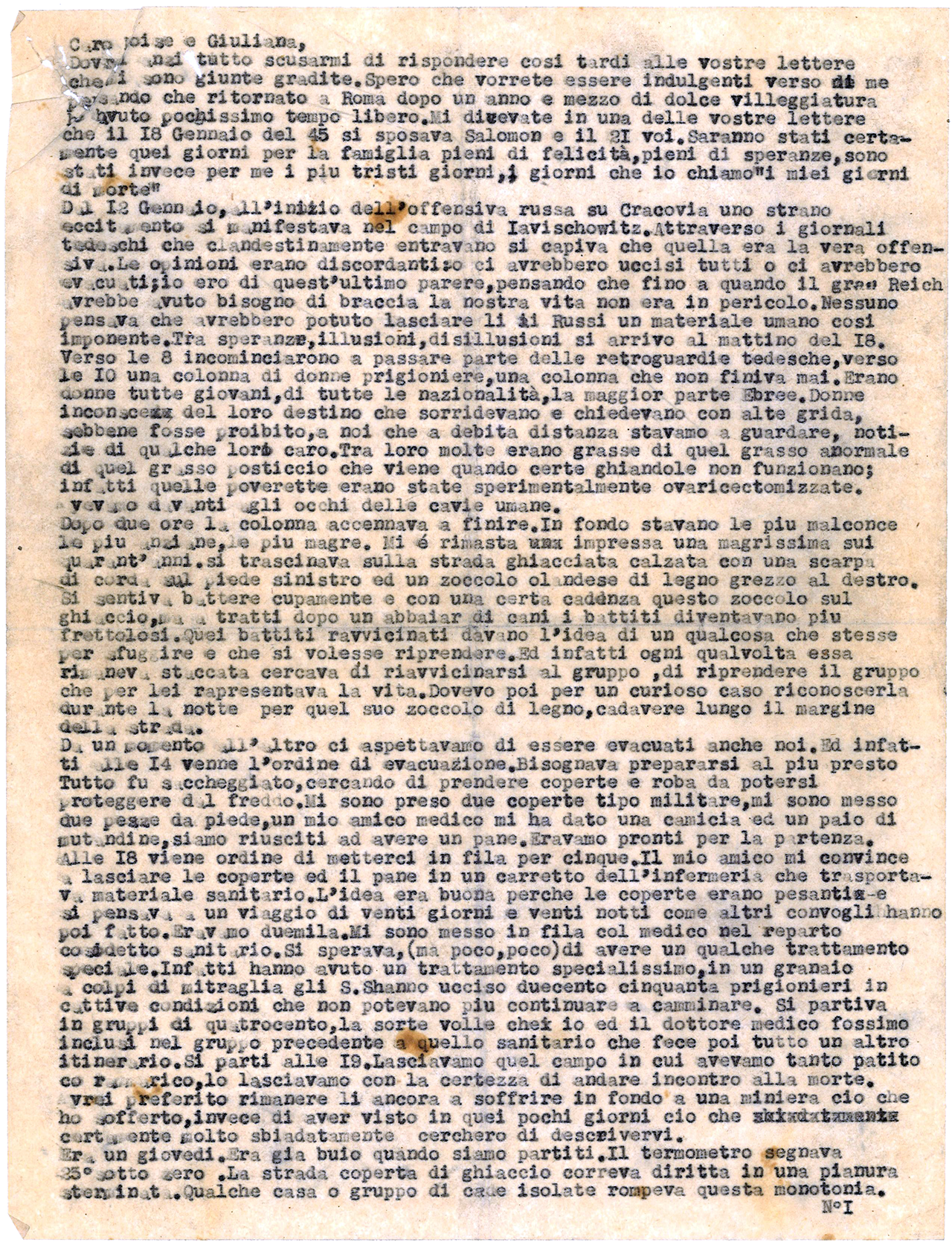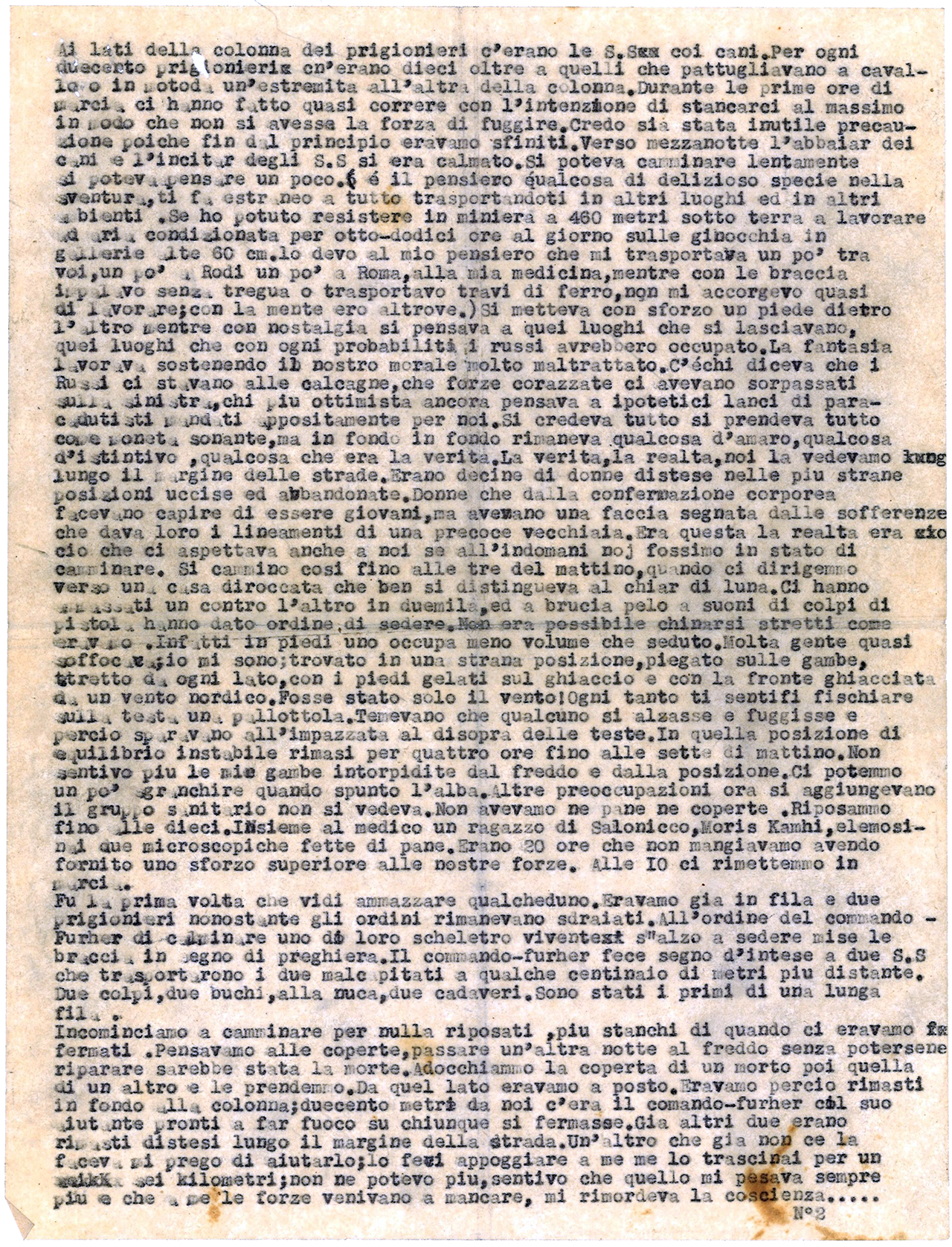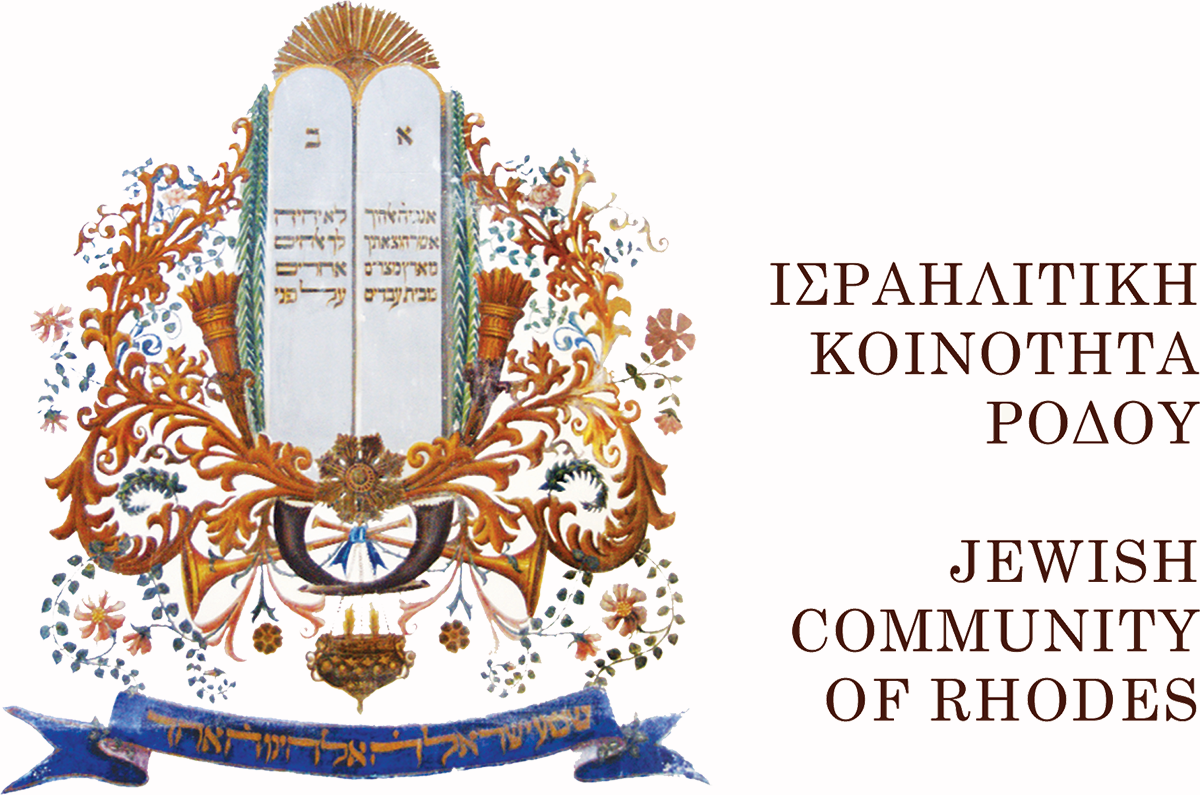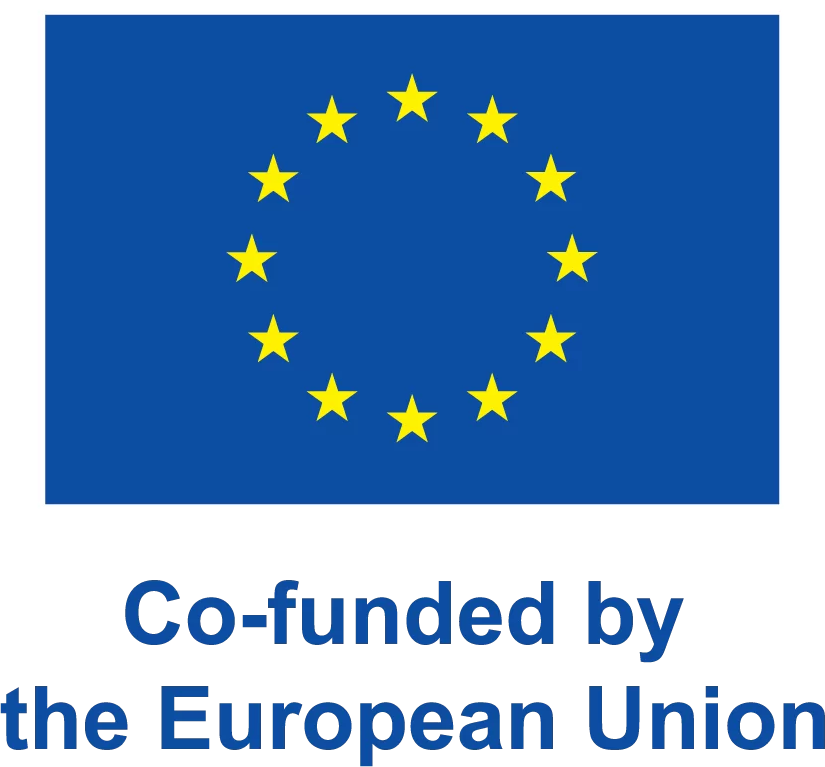Home » In-depth. Exceptions to the deportation of 23 July 1944 » Born in Rhodes and deported from Italy
Born in Rhodes and deported from Italy
During the 1920s and 1930s many Jews emigrated from Rhodes, also in the direction of Italy. However, after 8 September 1943, for some of these emigrants this meant arrest and deportation.
Through the stories of Jeannette Levi, Abner Hasson, Nissim Alhadeff and Elijah Bardavid, we take a close look at this diverse and paradigmatic journey undertaken by part of the Jewish community of the Italian Islands of the Aegean that moved to other places.
Jeannette (Giannetta) Levi
Jeannette (Giannetta) Levi was born in Rhodes on 13 November 1924, daughter of Bension Levi and Reina Ferrera. Her father Bension died in 1932 while her sisters Rachele and Giuditta were victims of the air raids on Rhodes in April 1944. The rest of the family, consisting of her mother Reina Ferrera and her siblings Giacobbe Giacomo, Elia Eliakim and Esther, were arrested and deported a few months later in July 1944.
In Rhodes Jeannette met a young man from Viareggio, in the province of Lucca, a sailor on one of the merchant ships that supported the Italian Navy, and became engaged to him.
At the end of January 1942, she left the Aegean island and moved to Viareggio to live with her fiancé’s family. After the Nazi occupation, the Italian authorities arrested her and took her to the provincial concentration camp for Jews in Bagni di Lucca (district of Bagni Caldi), from where, on 23 January 1944, the Germans took her and transported her first to Florence and then to Milan.
She was deported from Milan Centrale railway station in the convoy that left on 30 January destined for the Auschwitz extermination camp, where she entered under serial number 75184.
Jeannette died on 30 November 1944, a few days after turning 20.
Interview with Elisa Franco by Marcello Pezzetti, Brussels, May 11th, 2004 (CDEC Foundation Archives, Fund Archivio della Memoria)
For more on her story, see Quintilia Angelini S. and Bezzan A. Adio Querida. Jeannette Levi: Rodi, Viareggio, Auschwitz, in “Documenti e Studi”, Rivista dell’Istituto storico della Resistenza e dell’età contemporanea in provincia di Lucca, no. 50, 2022, pp. 33-45.
Abner Hasson
Abner Hasson was born in Rhodes on 4 February 1898, the son of Celebi Hasson and Lea Hanan.
A merchant by profession and married to Ester Ass, he had three children, Edith, Gilberto and Jean-Pierre, born in Paris where the couple had moved. Because of the anti-Jewish persecution, they decided to leave France and take refuge in Italy. The Hasson family settled in Milan where their youngest son attended the Jewish school in Via Eupili.
To escape the air raids, the Hassons went to Maderno on Lake Garda, where they met other Jewish families, the Papos and the Menascés, who had also evacuated from the cities.
In the story Sulle rive del Lago di Garda (On the banks of Lake Garda), Nora Menascé, daughter of Vittorio Menascé and Sara Fintz and sister of Ester, recalls her days in Maderno and her friendship as an eleven-year-old girl with Abner’s son, before they were deported:
“Jean-Pierre always liked to change our plans, to see new places in the hills or on the lake, as if he knew that the time granted to him to discover the world would be all too brief.“
In December 1943 Abner Hasson attempted to escape to Switzerland together with his wife and children but on 28 December 1943 all five were arrested by the Italian authorities on the Swiss-Italian border; first held in Domodossola prison, they were then transferred to Milan and from there deported in the convoy that left Milan Centrale station on 30 January 1944 and arrived in Auschwitz on 6 February, the same convoy onto which Jeannette Levi was also loaded.
A few months later, in Rhodes in July 1944, Abner’s father Celebi Hasson and paternal aunt Caden Hasson were also arrested and deported.. Abner’s mother Lea Hanan had passed away some time previously.
For a more detailed account of the capture of the Hasson family, see the file on them in the “Vicissitudini dei singoli serie I” archive of the CDEC Foundation Archive (b. 11, file 326) .
Nissim Alhadeff
Nissim Alhadeff was born in Rhodes on 18 March 1918, the son of Isaac Alhadeff and Rebecca Cori.
A doctor by profession, he decided to move to Rome, Italy. After 8 September 1943 and with the arrival of the Germans, he was received, along with other refugees, at the Pontifical Oriental Institute and Russicum College in Via Cattaneo, which enjoyed special status. However, on the night of 21 December 1943, a raid was carried out by Pietro Koch, head of an investigation department of the National Republican Guard, and his men. Alhadeff was arrested and sent to the Fossoli camp before being deported on 5 April 1944. A survivor of the Shoah, he moved to the United States where he practised medicine. He died on 24 September 2009 at the age of 91.
Nissim Alhadeff, in a letter sent to Moise and Giuliana in 1945 after his return to Rome, tells the story of his deportation and the “death march” by which, together with hundreds of other internees, he was transferred from Jawischowitz, a sub-camp of Auschwitz, to the Buchenwald camp where he was liberated.
Dear Moise and Giuliana,
I should indeed apologise for replying so late to your letters, which I received with pleasure. I hope you will indulge me in thinking that having returned to Rome after a year and a half of happy holidaymaking I have had very little free time. You told me in one of your letters that Salomon was getting married on 18 January 45 and yourselves on the 21st. They must certainly have been days full of happiness, full of hope for the family. For me, they were the saddest days, the days I call “my days of death”.
From 12 January, at the beginning of the Russian offensive in Kraków, a strange feeling of excitement was felt in the Iavischowitz camp. Through the German newspapers that came in clandestinely, it was clear that this was the real offensive. Opinions were divided: they would either kill us all or evacuate us; I was of the latter opinion, thinking that as long as the Reich needed manpower, our lives would not be in danger. No one thought they would leave so many people there for the Russians. Amid our hopes, illusions and disillusions, we got the morning of the 18th.
[...]
I think it’s best not to let mum or dad read this, they will read it when they have seen me in person and seen that I am wonderfully well. Excuse the somewhat rushed style. Send my love to all, affectionately yours
Nissim”
Elia Bardavid
Elia Bardavid was the son of Alessandro Bohor Bardavid, born 20 September 1889, and Violetta Pontremoli, born 10 April 1895, both from Izmir in Turkey.
After the birth of their first daughter, Mary, in Izmir on 15 May 1921, the couple left Turkey, moving first to Rhodes, where Elia was born on 23 January 1925, then to Alexandria and then onto Athens, where their youngest daughter Graziella was born on 23 June 1931. Eventually, the Bardavid family – which had a restricted form of Italian citizenship – decided to move to Milan in Italy where Alessandro Bardavid’s brothers also lived.
In September 1943, Elia Bardavid was with his parents and his younger sister Graziella in Lasnigo, in the province of Como, having evacuated from Milan. After the German invasion, the Bardavids decided to find a safer place not far from there in Sormano and it was here that they received the news that their other daughter Mary Bardavid and her husband Giacomo Elia Modiano had been killed on 16 September by the SS in Arona, in the province of Novara, during the Lake Maggiore massacres.
As part of their ongoing search for a safe haven, Graziella was temporarily housed in the boarding school of the nuns of Santa Maria Bambina in Asso, an hour’s walk from Sormano.
As the situation worsened, the whole family tried to cross over into Switzerland in December 1943 but were sent back at the border. Unable to return to the convent because it was considered too dangerous, Graziella was hidden firstly in Asso, in the haberdashery shop of Giuseppe and Maria Mazza, business associates of her father Alessandro, and then by relatives of the couple, Giuseppe and Luigi Bonaiti, who lived in Calolziocorte and kept the girl with them until Italy’s liberation. Both the Mazzas and the Bonaitis were awarded the title of Righteous Among the Nations.
Graziella saw her parents and brother Elia for the last time on 25 December 1943. In fact, on 13 March 1944, Elia, father Alessandro and mother Violetta were arrested by the Italian police in Sormano, taken to the transit camp of Fossoli and from there, on 5 April 1944 deported to Auschwitz from which they did not return.
On arrival at the extermination camp, Elia Bardavid was registered under number 179990. Later evacuated to Buchenwald concentration camp, he died on 27 March 1945.
For more on Graziella Bardavid’s survival story, see edited by Gutman I., Rivlin B. and Picciotto L., I Giusti d’Italia. I non ebrei che salvarono gli ebrei 1943-1945, Mondadori, Milano, 2007, pp. 56-58
